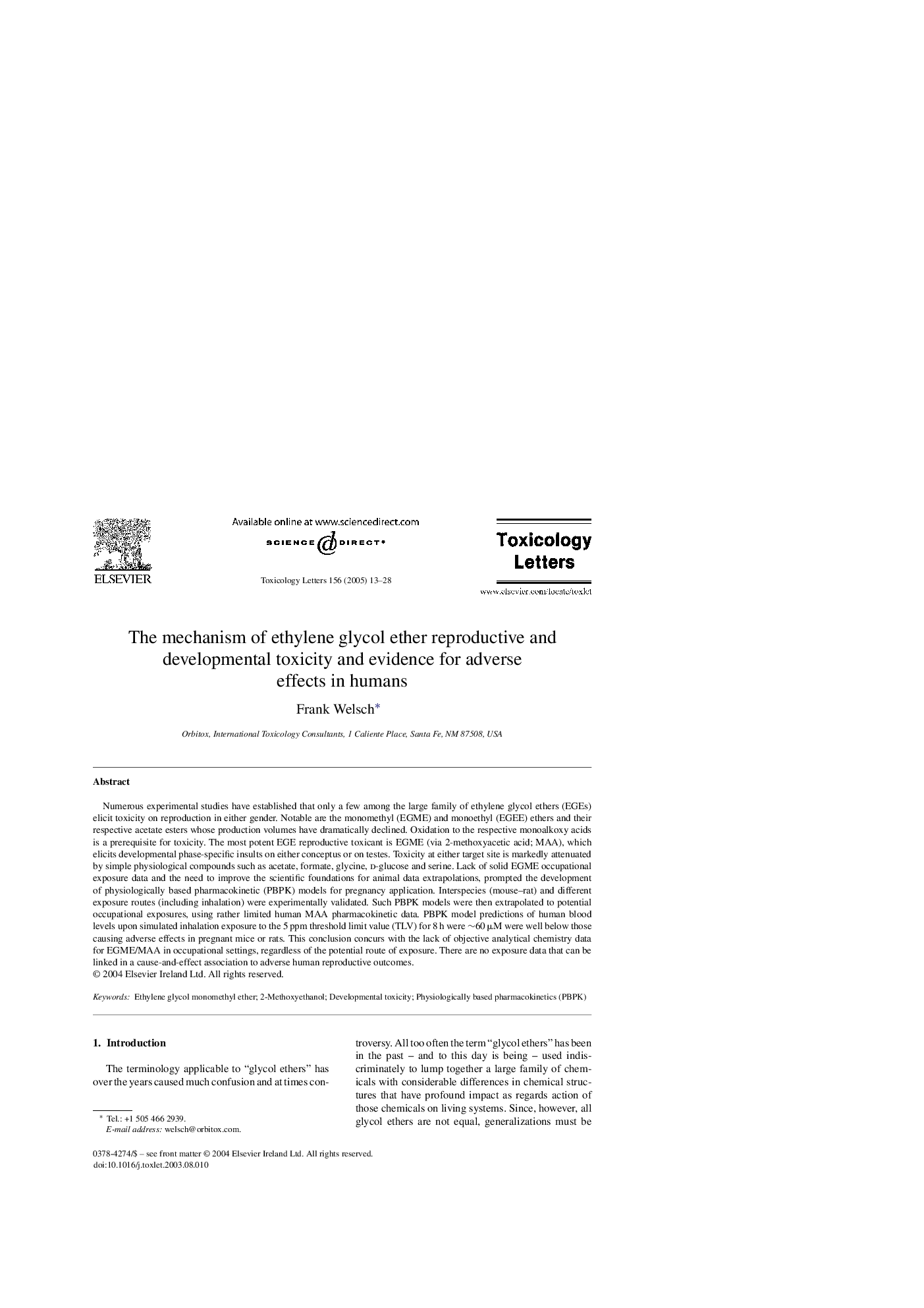| کد مقاله | کد نشریه | سال انتشار | مقاله انگلیسی | نسخه تمام متن |
|---|---|---|---|---|
| 9036829 | 1133377 | 2005 | 16 صفحه PDF | دانلود رایگان |
عنوان انگلیسی مقاله ISI
The mechanism of ethylene glycol ether reproductive and developmental toxicity and evidence for adverse effects in humans
دانلود مقاله + سفارش ترجمه
دانلود مقاله ISI انگلیسی
رایگان برای ایرانیان
کلمات کلیدی
موضوعات مرتبط
علوم زیستی و بیوفناوری
علوم محیط زیست
بهداشت، سم شناسی و جهش زایی
پیش نمایش صفحه اول مقاله

چکیده انگلیسی
Numerous experimental studies have established that only a few among the large family of ethylene glycol ethers (EGEs) elicit toxicity on reproduction in either gender. Notable are the monomethyl (EGME) and monoethyl (EGEE) ethers and their respective acetate esters whose production volumes have dramatically declined. Oxidation to the respective monoalkoxy acids is a prerequisite for toxicity. The most potent EGE reproductive toxicant is EGME (via 2-methoxyacetic acid; MAA), which elicits developmental phase-specific insults on either conceptus or on testes. Toxicity at either target site is markedly attenuated by simple physiological compounds such as acetate, formate, glycine, d-glucose and serine. Lack of solid EGME occupational exposure data and the need to improve the scientific foundations for animal data extrapolations, prompted the development of physiologically based pharmacokinetic (PBPK) models for pregnancy application. Interspecies (mouse-rat) and different exposure routes (including inhalation) were experimentally validated. Such PBPK models were then extrapolated to potential occupational exposures, using rather limited human MAA pharmacokinetic data. PBPK model predictions of human blood levels upon simulated inhalation exposure to the 5 ppm threshold limit value (TLV) for 8 h were â¼60 μM were well below those causing adverse effects in pregnant mice or rats. This conclusion concurs with the lack of objective analytical chemistry data for EGME/MAA in occupational settings, regardless of the potential route of exposure. There are no exposure data that can be linked in a cause-and-effect association to adverse human reproductive outcomes.
ناشر
Database: Elsevier - ScienceDirect (ساینس دایرکت)
Journal: Toxicology Letters - Volume 156, Issue 1, 28 March 2005, Pages 13-28
Journal: Toxicology Letters - Volume 156, Issue 1, 28 March 2005, Pages 13-28
نویسندگان
Frank Welsch,